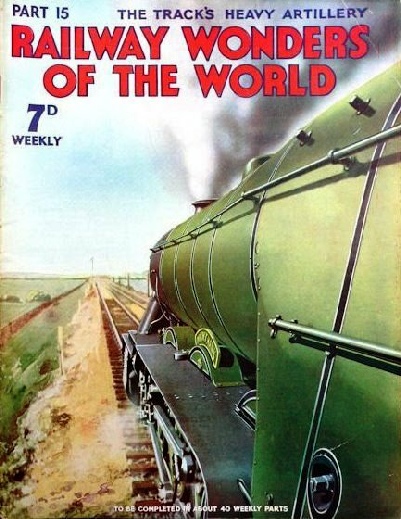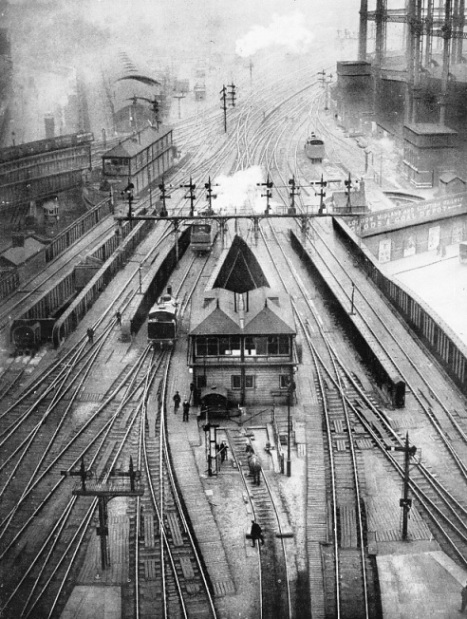
© Railway Wonders of the World 2012-


Part 15


Part 15 of Railway Wonders of the World was published on Friday 10th May 1935.
This issue contained a black and white art plate depicting St Pancras Station. It was attached to page 461, or the fifth page of this issue.
The Cover
Our cover this week depicts “Night Hawk”, No. 2577 of the LNER, running at speed. This locomotive is of the 4-6-2 “Pacific” type with three cylinders, designed by Mr H. N. Gresley, CBE, the Chief Mechanical Engineer of the LNER, for express passenger work. This engine, with tender, is 70 ft 2⅜ in long over the buffers, and weighs in working order 158 tons 13 cwt. Engines of this class are used on the crack expresses between the London terminus at King’s Cross and Waverley Station at Edinburgh, and on other lines comprising the LNER system.

Contents of Part 15
Editorial
The “Trans-Siberian Express” (Part 2)
Concluded from part 14. This is the seventh article in the series on Famous Trains. A complementary article on Russia and Siberia appears in part 32. You can read more on the Trans-Siberian Railway in Wonders of World Engineering.
(Pages 453-457 )
The Track’s Heavy Artillery
The use of heavy excavating machinery in the construction of railways. This chapter deals with the machines that are used to excavate and prepare the ground before track-laying is begun. A sequel to this article, Engineering Equipment, appears in part 27. You can read more on this subject in Frederick Talbot’s Railway Wonders of the World (1913), part II and part III.
(Pages 458-464 )
St Pancras Station (art plate)
ST. PANCRAS. A terminus of the London Midland and Scottish Railway. Across the lines from the gas works, top right of the picture, the coal depot is situated. The lines branching off to the left over the girder bridge lead down to the LMS goods station at Somers Town, adjoining St Pancras passenger Station. Note the horse on the wagon hoist in the foreground, in front of the station signal box. This hoist serves as means of communication with an underground store. The wagons are moved in and out by horses, in strange contrast with the locomotives on adjacent tracks.
(Attached to page 461)
Through the York Museum
A visit to the York Museum, a fascinating record of more than a century of railway progress. More than a century of progress has gone to the making of the modern railways; but until comparatively recently little effort was made to bring together in a permanent collection exhibits of early locomotives and equipment. Some time ago, however, a museum was opened at York, and this chapter describes this interesting exhibition.
(Pages 465-470 )
Ticket and Change Machines
Mechanical aids that speed up travel. One of the most recent developments in railway practice has been the ticket and change machines, that are almost human in the work they do. The principle of the first ticket machine - invented by Thomas Edmondson, a chief booking clerk on the Manchester & Leeds Railway - is, for the most part, in use to-day. You can read more on Automatic Coin Machines in Wonders of World Engineering.
(Pages 471-474 )
Solving the Smoke Problem
Designing locomotives to deflect smoke away from the cab. One of the most picturesque sights we see when a locomotive is at speed is the smoke that streams from the chimney. To the engine drive, however, this presents a serious problem, and one that railway engineers are trying to solve. The problem is caused partly because boilers - in order to give greater power - continue to grow in diameter, with the result that chimneys are forced to become considerably smaller. To avoid striking overhead structures.
(Pages 475-479 )
Three “Brighton Line” Tank Engines
A photo feature illustrating three Brighton line tank engines.
(Page 480)
